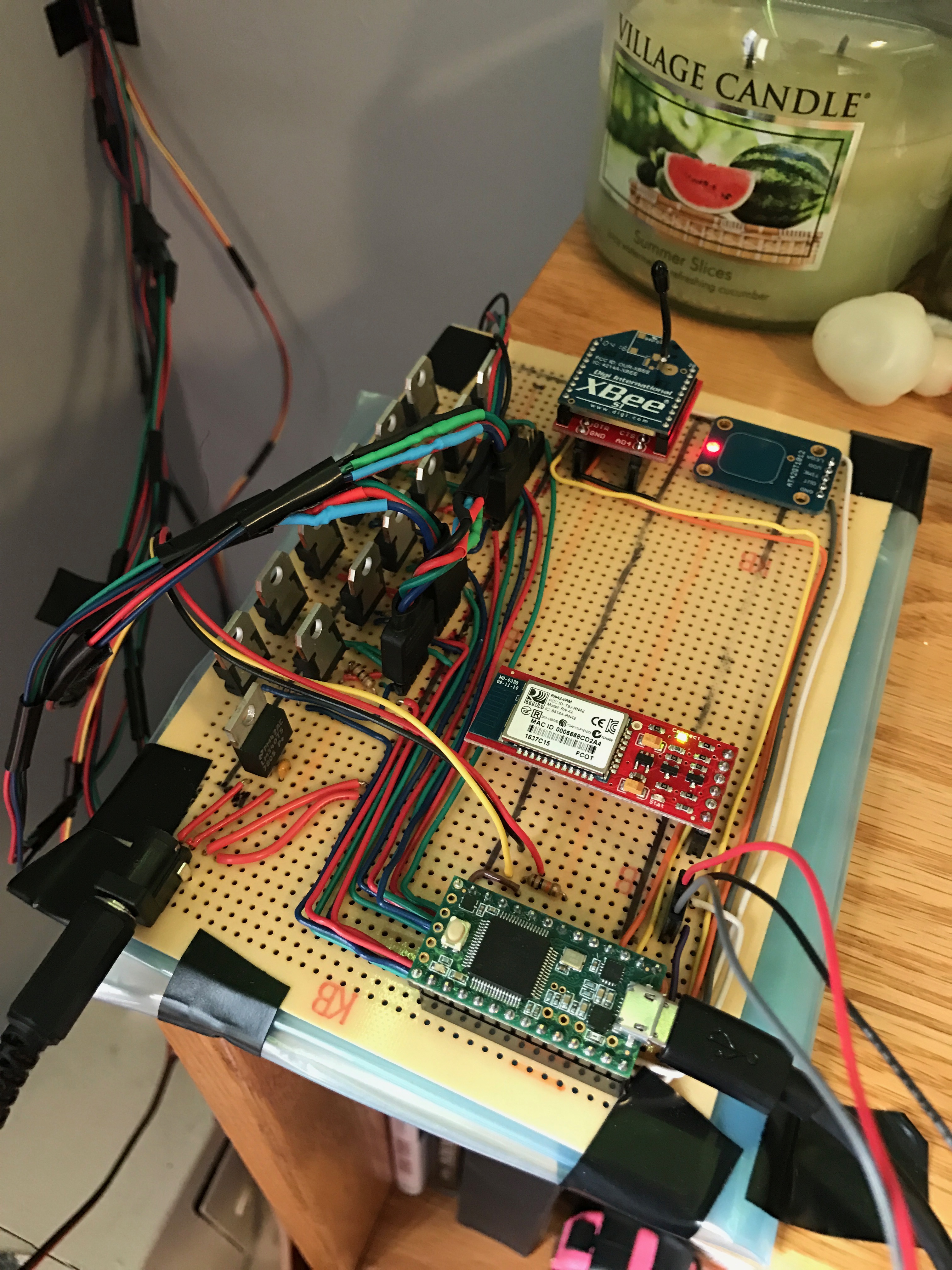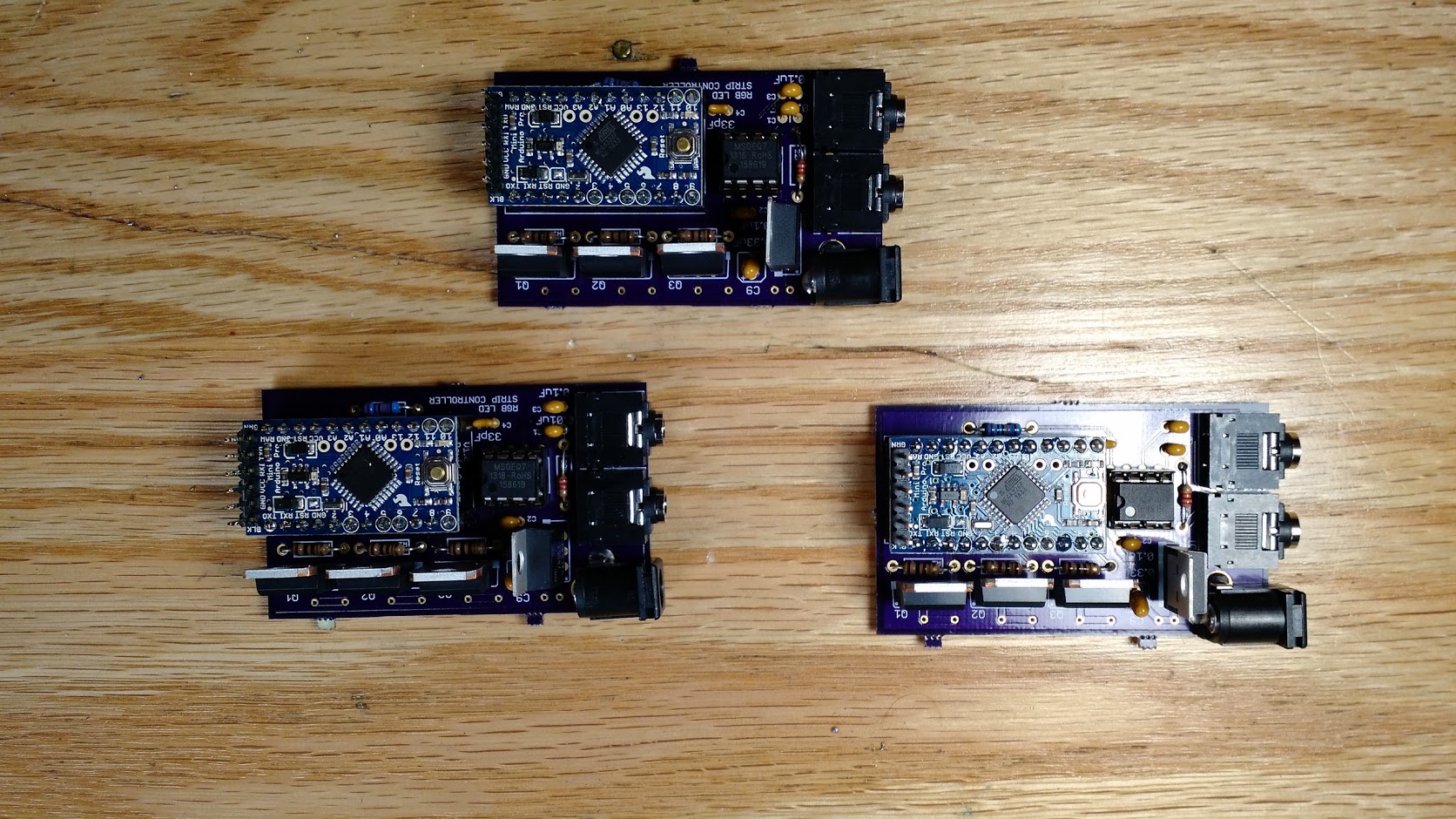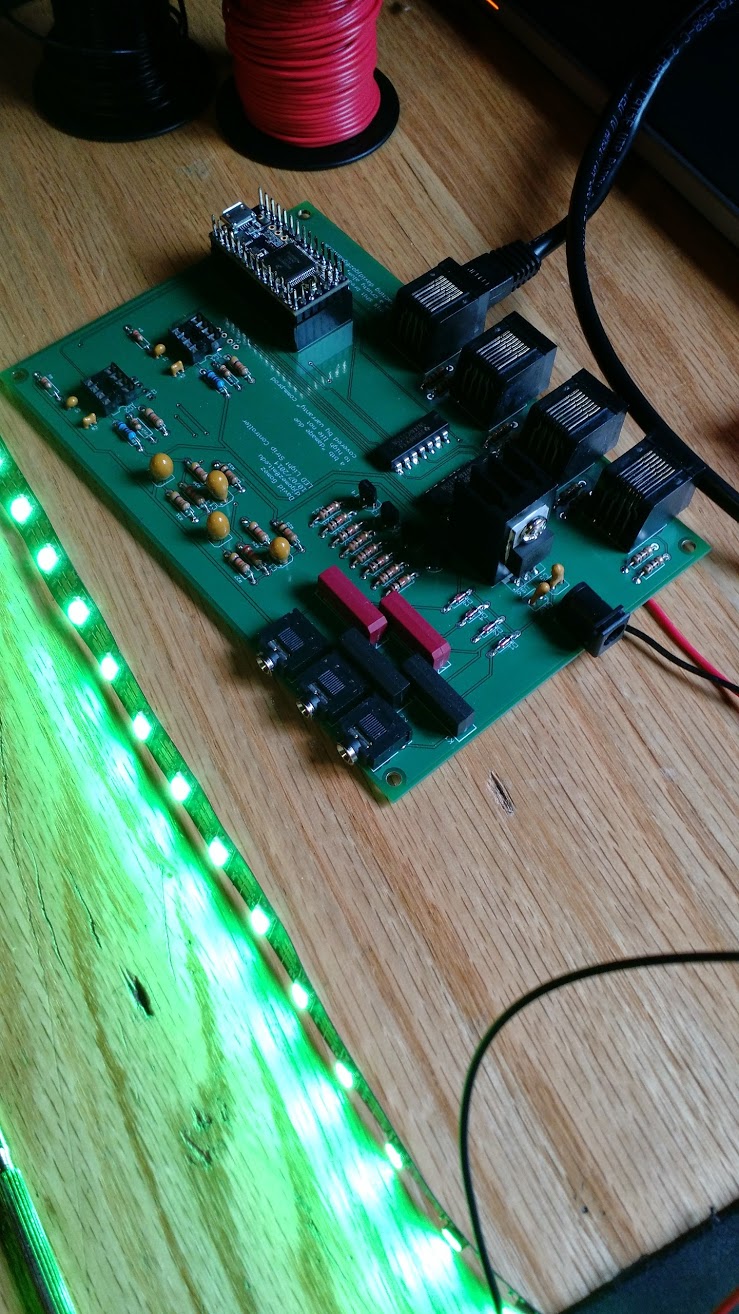Applying LEDs to walls of rooms has been a fun pastime of mine for quite some time now. One of my favorite room light projects was the app controlled lighting system I made for my senior year room in college.
The heart of the project is the hacky protoboard controller shown in the picture below. Key parts are the teensy microcontroller to run everything. There’s also a bluetooth and Xbee wireless module. The bluetooth enables the controller to interface with a phone app that selects what the lights do. The Xbee communicates with the star ceiling and a DJ laser light I hacked to be controlled by the Xbee. There’s also a big bank of MOSFETs to control the LEDs. This project utilized some analog RGB LED strips I had left over from another project so the FETs were required to control the colors of the strips.

This video shows a bit of the app working. The app enabled me to select the color of the lights with a color wheel interface. I could also set some simple visualizations like a fade and a chase pattern.
Along with colors, I could also set the color temperature of the lights if I wanted them to be white. I added a “real life f.lux” option as well. F.lux is a software package that suppressed the blue colors, making everything look more orange, in your screen during night time. Reducing the amount of blue light helps your body produce more melatonin which is important for good sleep.
There’s also an interface which lets you control the speed of the DJ laser light with a manatee icon that you use as a dial.
This is another view of the room, each wall’s color could be individually controlled. You can see the star ceiling (which was also controllable with the app) in this picture as well.

While my room lights unfortunately got the short end of the stick in terms of “controller elegance” a few other previous projects I did had some real PCBs to control everything. These ones in the image below control the same type of analog RGB LEDs strips I used in my room lights. They also include a special IC that spits out the intensity of 7 different bands of audio frequency, useful for making simple music visualizations.

A lot of my LED projects have revolved around trying to visualize music with LEDs. This board below was one of the best ones I made for this. It included a pass through for a line in audio source that a Teensy micro controller could directly sample from. The Teensy has some great libraries for doing efficient Fourier Transforms which enable you to analyze the frequency content of music very well and create some cool visuals.

This whole project was for some LED lights that I installed in the floor lounge of my dorm with the help of some friends. This board controlled serially addressable LEDs so you can see how patterns like blobs that run across all the LEDs are possible since each LED can be individually controlled.
There are other forms for LEDs to take too, here are some on string lights with ping pong balls attached to diffuse the light more.

All in all, projects with LEDs are a lot of fun and there will be a lot more of these to come from me.

